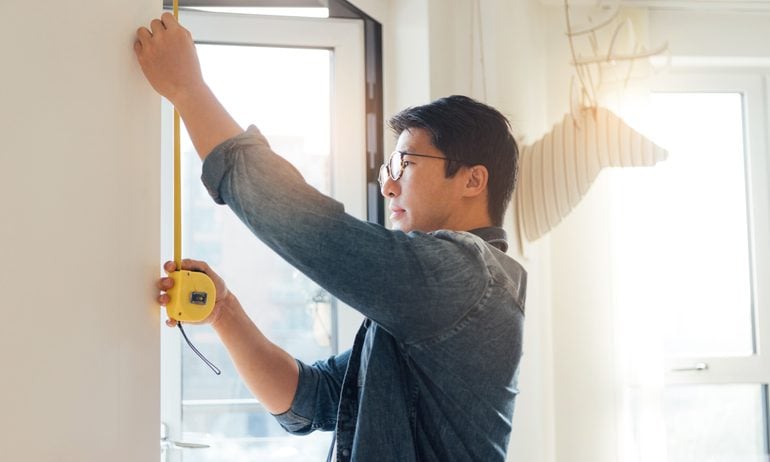Energy Efficient Home Improvement Credit: How It Works, Qualifying Expenses
If you gave your home an eco-friendly makeover in 2025, don’t forget to look into the IRS’ energy tax credit to recoup up to 30% of the cost.

Many, or all, of the products featured on this page are from our advertising partners who compensate us when you take certain actions on our website or click to take an action on their website. However, this does not influence our evaluations. Our opinions are our own. Here is a list of our partners and here's how we make money.
The energy-efficient home improvement credit and the residential clean energy tax credit expire on December 31, 2025.
What are energy tax credits?
The federal government offers two types of energy tax credits to give consumers a tax break for investing in energy-efficient upgrades or purchases.
The energy efficient home improvement credit helps cover the costs of certain energy-efficient home improvements done before December 31, 2025, and the purchase of upgrades, such as heat pumps, made before December 31, 2025.
The residential clean energy tax credit, also referred to as the solar tax credit, can be claimed for eligible solar energy systems and other types of qualifying property that are purchased and installed before December 31, 2025.
This article covers the energy efficient home improvement credit.
What is the energy efficient home improvement credit?
The energy efficient home improvement credit is a tax benefit that can help homeowners cover costs related to qualifying improvements made from 2023 to December 31, 2025.
The maximum energy efficient home improvement credit is $3,200 — a combination of $1,200 for home improvements and $2,000 for heat pumps and biomass stoves or boilers. You can only claim expenses made in 2025 on the return you file in 2026.
NerdWallet Wealth Partners can create a personalized plan that evolves with you, from this tax season to the next chapter. Start by answering a few questions.

on NerdWallet Wealth Partners' site. For informational purposes only. NerdWallet Wealth Partners does not provide tax or legal advice.
Which projects qualify for the home improvement part of the credit?
You can claim 30% of the cost of energy-efficient home upgrades, up to a maximum credit of $1,200. Check with the manufacturer, retailer or Energy Star website to ensure the product is eligible for the tax credit.
Note, however, that some types of improvements — such as energy audits, residential energy property, and energy-efficient doors, windows and insulation — come with additional limitations.
Home energy audits
If you paid an auditor to assess your home for energy efficiency opportunities, you can claim up to $150 per year for a qualifying home energy audit. Be sure to visit the IRS’ energy home improvements page for details on what qualifies. As of 2024, you must get a written inspection report by a home energy auditor who follows industry best practices and has a valid employer identification number or tax ID.
Residential energy property
You can claim up to $600 per item for qualifying residential energy property and the cost of their installation. This includes new air conditioners, furnaces, and water boilers and heaters. Support systems like panelboards and feeders may also qualify.
Energy-efficient doors, windows and insulation
Exterior doors have a limit of $250 per door and a total limit of $500.
Exterior windows and skylights have a $600 total limit.
Insulation and air sealing materials or systems have no additional limit outside of the general $1,200 maximum.
Note, though, the 30% credit maximum. For example, if you spent $1,200 on a new energy-conserving insulation system, the most you’ll get back on that investment through the credit is $360. Also, labor costs for the installation of doors, windows and insulation don’t count toward the credit.
Which projects qualify for the heat pump part of the credit?
Heat pumps and biomass stoves or boilers have a credit limit of 30% of costs up to $2,000 for 2025 expenses. New heat pumps, water heaters, and biomass stoves and boilers qualify. And one perk: the cost of installation also counts toward the credit.
The more you earn, the more complex your taxes become. Learn the 10 traps to dodge.

on NerdWallet Wealth Partners' site. For informational purposes only. NerdWallet Wealth Partners does not provide tax or legal advice.
Who qualifies for this energy tax credit?
To qualify for the energy efficient home improvement credit, the home has to be your primary residence and located in the U.S. It can’t be newly built and generally also can’t be used solely as a business. However, if you use your home as a business 20% of the time or less, you can still claim the full credit amount. If your home serves as a business more than 20% of the time, the credit amount may decrease.
How to claim the home improvement credit
You can claim the energy efficient home improvement credit by attaching Form 5695, Residential Energy Credits, to your tax return. Have all your documentation handy, as you’ll need to know the exact costs of each expense to claim the credit.
Is the energy efficient home improvement credit refundable?
The energy efficient home improvement credit is nonrefundable, and you can’t put any leftover credit toward a future tax bill. A nonrefundable credit lowers your tax bill by your credit amount, but if it dips your tax bill below zero, you won’t get the excess credit back as a tax refund.
How to calculate your credit
You’ll want to consider any subsidies, rebates or incentives you received for an energy-saving home improvement when calculating your credit amount.
Utility-based energy incentives and certain rebates generally have to be subtracted from your expenses before calculating your credit, whereas state energy efficiency incentives typically don’t. But remember to check the IRS website for full guidelines before figuring your expense amount.





